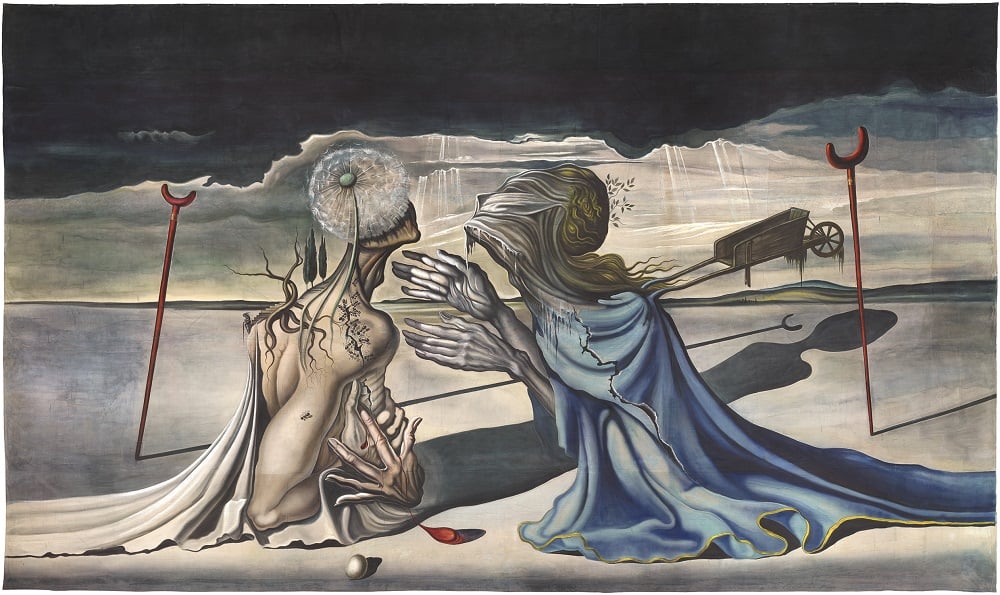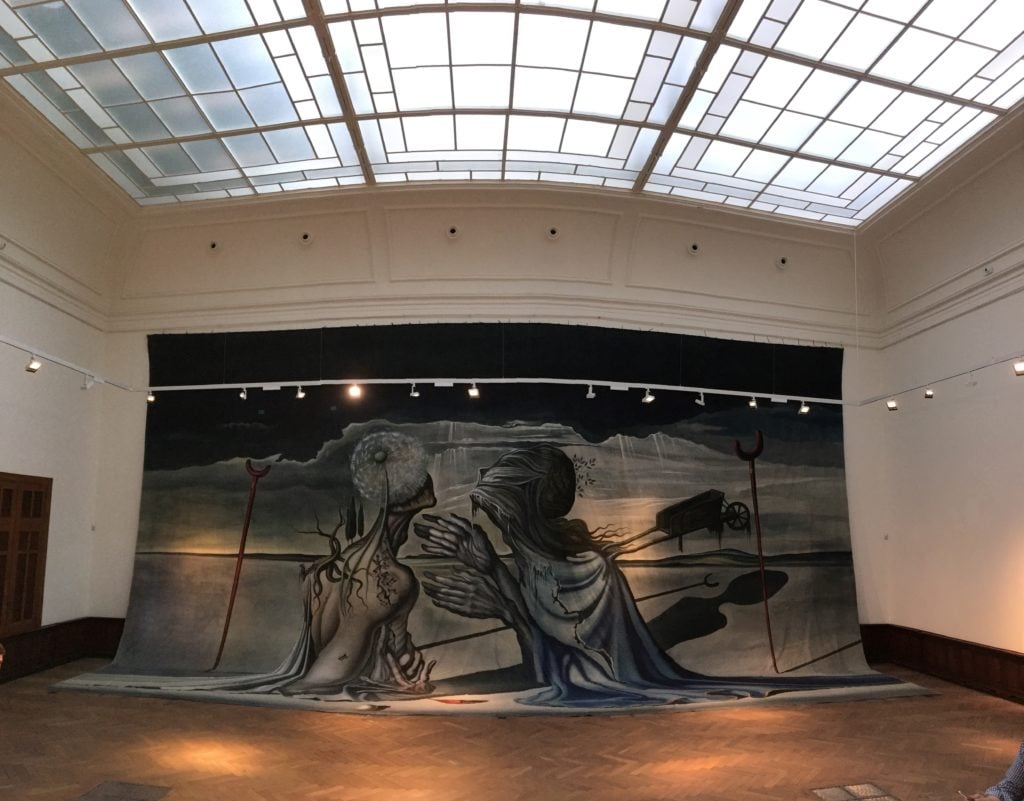Auctions
Rare, Monumental Salvador Dalí Stage Curtain Up For Auction
The Surrealist painted the curtain for his 'paranoiac ballet' adaptation of 'Tristan and Isolde.'

The Surrealist painted the curtain for his 'paranoiac ballet' adaptation of 'Tristan and Isolde.'

Alyssa Buffenstein

A lesser-known portion of Salvador Dalí’s oeuvre is his work for the stage; throughout his career, the surrealist worked on nearly 40 theater pieces. Most went unrealized due to an (unsurprising) impracticality, but one, Tristan Fou, or Mad Tristan, managed to become a reality. Now, the Dali-designed backdrop for the ballet, a monumental painted canvas depicting a tortured, twisted version of Richard Wagner’s Tristan and Isolde, is hitting the auction block at a private sale at Kunsthaus Lempertz auction house in Brussels.
Subtitled “the first paranoiac ballet based on the eternal myth of love in death,” Dalí wrote Tristan Fou’s libretto, directed, and designed the stage and costumes, in addition to choreographing the entire piece in collaboration with Russian choreographer Léonide Massine.
With such a consuming vision for the ballet, it makes sense that Dalí was inspired by Wagner’s idea of a Gesamtkunstwerk, a “total work of art” that, in this case, is realized through a unifying of painterly, sculptural, performative, and theatrical elements.

Salvador Dalí, Mad Tristan stage curtain (1944). Image courtesy of Kunsthaus Lempertz.
Tristan Fou was written in 1936-38, but production and performance was stalled until 1944. That year, ballet impresario Marquis de Cuevas founded his Grand Ballet in New York City, and gave Dalí free reign of his stage and company of dancers, plus a hefty production budget. From 1949 to 1958, the “paranoic ballet” then traveled to London, Barcelona, Monte Carlo, Venice, and Paris.
Dalí first painted the massive backdrop as a small oil painting, which was then enlarged by a theater prop studio in New Jersey, and finally tweaked by the artist himself. He added tiny details to the nearly 29 x 48 foot canvas, like crawling ants, spots of blood, and a distant village on the horizon.
The auction is a chance for a collector or an institution with a lot of space on their hands—and a sensibility for the surreal—to own a rare part of Dalí history. A preview is taking place until December 3 at Lempertz in Brussels.